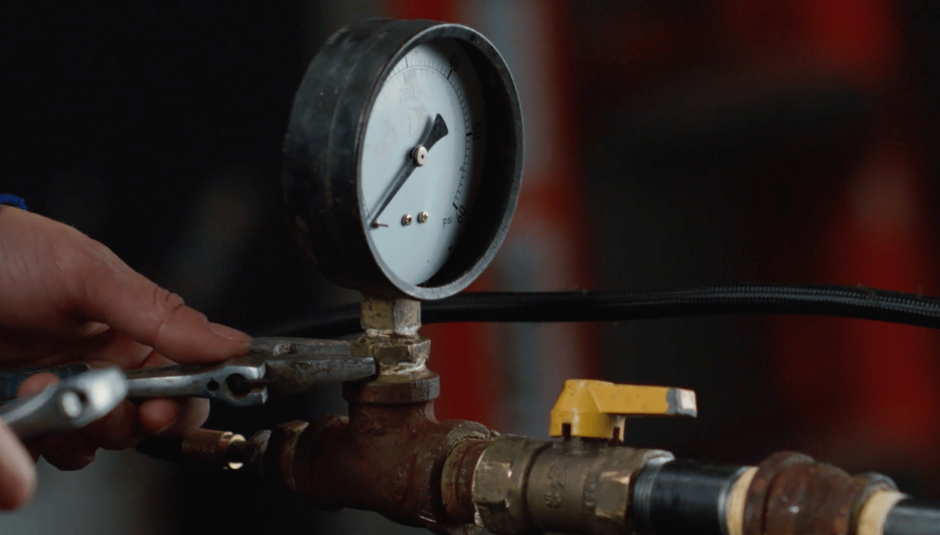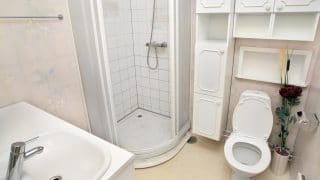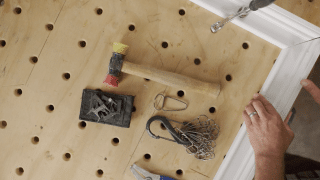
When installing new piping, it’s important to test the system for plumbing leaks before it goes live. Plumbing codes require licensed plumbers to perform tests on new piping and have the results verified by an inspector. These tests are useful when trying to diagnose a leak in a piping system, as they help plumbers narrow down its location by isolating parts of the system. Tests should be performed by a licensed plumber, who can properly execute the test and interpret its results.
What is a hydrostatic plumbing test?
Hydrostatic pressure tests are used for leak detection in pressurized systems like pipes, boilers, gas piping, and so on. Hydro stands for water, and static means standing, so the test involves standing water. The concept is simple: Fill a pipe with water, and if the water level drops, there’s a leak.
Hydrostatic tests measure the pressure in a system over a short period of time to see if a pressure loss indicates a leak. Plumbing piping systems can be tested with air or water, but most are tested with water, since that’s what they’re made to hold. These tests are used on all piping systems—including water, drains, vent, sewer, and gas—to help ensure plumbers’ connections are tight before the system is used.
How is a hydrostatic pressure test performed?
A hydrostatic pressure test involves the following steps:
- A test ball is placed in the main cleanout for the sewer pipe and inflated with an air pump. (Test balls come in long and short lengths.) The test ball expands, sealing the connection so liquid can’t pass.
- Pipes are filled with water, either from the tap or a hose bib. A hydrostatic pump is used to increase the pressure by adding more water, as required by code. This pump is hand-operated and has a gauge to indicate the system’s PSI.
- Once the required water pressure is reached, the plumber monitors the gauges for 15 to 20 minutes to check for a drop in pressure. If there is no drop, there is no leak and the system is sound.
- If the water pressure drops, the plumber may add more water to confirm their findings. The loss of pressure may be due to air pockets, and adding more water will reduce the amount of air in the line. If the water pressure drops again, a leak is confirmed.
- Isolation testing helps determine the source of the leak. This is done by isolating sections of pipe with test balls and performing the hydrostatic test again until the location is determined. A video camera may be used to confirm the test balls are sealing the plumbing lines. Then the plumber can make a leak repair or replace the pipe section as needed.
When to perform a plumbing test
If you suspect a leak in your building, a hydrostatic test may be done to confirm it. The test can be performed on both the water lines and drain lines of the system. Once a leak is confirmed, isolation testing is performed to find the source. Test balls can be used to isolate pipe lengths.
If you’re having foundation leveling done on your home, it’s important to know even small adjustments to the home’s foundation can cause leaks at pipe fittings and connections. It’s a good idea to test the entire plumbing system after any work is done on your home’s foundation.
When installing new piping, it’s important to test the system for plumbing leaks before it goes live. Plumbing codes require licensed plumbers to perform tests on new piping and have the results verified by an inspector. These tests are useful when trying to diagnose a leak in a piping system, as they help plumbers narrow down its location by isolating parts of the system. Tests should be performed by a licensed plumber, who can properly execute the test and interpret its results.
What is a hydrostatic plumbing test?
Hydrostatic pressure tests are used for leak detection in pressurized systems like pipes, boilers, gas piping, and so on. Hydro stands for water, and static means standing, so the test involves standing water. The concept is simple: Fill a pipe with water, and if the water level drops, there’s a leak.
Hydrostatic tests measure the pressure in a system over a short period of time to see if a pressure loss indicates a leak. Plumbing piping systems can be tested with air or water, but most are tested with water, since that’s what they’re made to hold. These tests are used on all piping systems—including water, drains, vent, sewer, and gas—to help ensure plumbers’ connections are tight before the system is used.
How is a hydrostatic pressure test performed?
A hydrostatic pressure test involves the following steps:
- A test ball is placed in the main cleanout for the sewer pipe and inflated with an air pump. (Test balls come in long and short lengths.) The test ball expands, sealing the connection so liquid can’t pass.
- Pipes are filled with water, either from the tap or a hose bib. A hydrostatic pump is used to increase the pressure by adding more water, as required by code. This pump is hand-operated and has a gauge to indicate the system’s PSI.
- Once the required water pressure is reached, the plumber monitors the gauges for 15 to 20 minutes to check for a drop in pressure. If there is no drop, there is no leak and the system is sound.
- If the water pressure drops, the plumber may add more water to confirm their findings. The loss of pressure may be due to air pockets, and adding more water will reduce the amount of air in the line. If the water pressure drops again, a leak is confirmed.
- Isolation testing helps determine the source of the leak. This is done by isolating sections of pipe with test balls and performing the hydrostatic test again until the location is determined. A video camera may be used to confirm the test balls are sealing the plumbing lines. Then the plumber can make a leak repair or replace the pipe section as needed.
When to perform a plumbing test
If you suspect a leak in your building, a hydrostatic test may be done to confirm it. The test can be performed on both the water lines and drain lines of the system. Once a leak is confirmed, isolation testing is performed to find the source. Test balls can be used to isolate pipe lengths.
If you’re having foundation leveling done on your home, it’s important to know even small adjustments to the home’s foundation can cause leaks at pipe fittings and connections. It’s a good idea to test the entire plumbing system after any work is done on your home’s foundation.
A water system can also be tested before a home purchase to prevent further damage and unforeseen costs.
MT Copeland offers video-based online classes that give you a foundation in construction fundamentals with real-world applications, like plumbing basics. Classes include professionally produced videos taught by practicing craftspeople, and supplementary downloads like quizzes, blueprints, and other materials to help you master the skills.







